Issue 8


Spring 2023
GO RAIBH MAITH AGAT —REFLECTING ON AN IRISH LEADER'S INFLUENCE:
CORU's Registrar and CEO Ginny Hanrahan retires after hosting CLEAR's International Summit in Dublin.

THE PUBLIC
A look at Ontario's Citizen Advisory Group
THE REGISTRANT
Meet the man who chose law school over retirement
THE REGULATOR Outcomes-based leadership regulatory transformation at the TSSA
Issue 8 — Spring 2023
Journalists and Contributors
Damian Ali
M. Daniel Roukema
Dean Benard
Bonnie Rose
Summer Intern
Josh Fanous
Graphic Designer & Production Manager
Allison Wedler
Editor in Chief
M. Daniel Roukema
Photo credits
Adobe Canva
Council on Licensure, Enforcement and Regulation (CLEAR)
MDR Strategy Group Ltd.

Fennell Photography
TSSA
The Registrar magazine is produced and published by MDR Strategy Group Ltd.
800-1701 Hollis Street
Halifax, Nova Scotia Canada B3J 2T9
1-800-874-3820
editor@theregistar.ca www.theregistrar.ca


www.mdrstrategy.ca
© 2023. All rights reserved
Regulators need professional issues & media monitoring services
LISTEN TO WHAT YOU SEE
Daily coverage reports by 9AM
Alerts and analyses
Monthly analytics
Quarterly summaries
Annual reports
CONTACT US TODAY
www.mdrstrategy.ca
STAY INFORMED ABOUT CURRENT INDUSTRY ISSUES

SUBSCRIBE
DR
THEREGISTRAR.CA 2
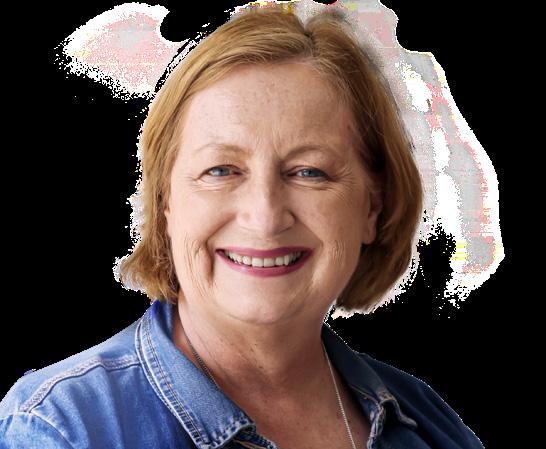
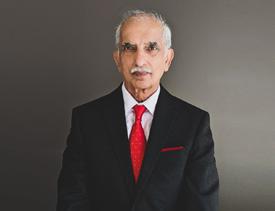




IN THIS ISSUE 4 THE PUBLIC The inner-workings of province of Ontario's Citizen
8 THE REGISTRANT Meet Mohsin Rashdi, an Ontario lawyer who opted for law school instead of retirement 12 COVER STORY Reflecting on the career of CORU's retiring Registrar and CEO 18 GOVERNANCE Governance modernization in the regulatory sector 22 THE REGULATOR Technical Standards & Safety Authority
describes its evolution of safety 30 THE REGISTRAR PODCAST
12 8 22 4 30 THEREGISTRAR.CA 3
Advisory Group
(TSSA)
Watch guests Lise Betteridge and Zubin Austin in conversation with host Daniel Roukema
A LOOK AT ONTARIO’S CITIZEN ADVISORY GROUP
Fment is vital to ensure transparency and openness in the regulatory sector.
In Ontario, the Citizen Advisory
by the College of Physiotherapists of Ontario (CPO) as a patient feedback tool, it has now evolved into the CAG Partnership, a collective of 22 health regulatory colleges (“Part-

ners” in Ontario) that use a variety -
CAG Members, comprised of patients and caregivers from across Ontario, provide input on Partner colleges’ policies and standards,
The Registrar staff
The Public THEREGISTRAR.CA 4
strategic initiatives, and communications directed at the public. Members draw on their lived experiences to inform decision-making about regulatory work in the healthcare sector to support the Partnership’s collective mandate to protect the public interest.

The College of Physicians and Surgeons of Ontario (CPSO) assumed the role of Chair of the CAG on behalf of the Partnership of colleges in 2019. Craig Roxborough, CPSO’s Director of Policy (at the time this article was written) and the Partnership’s Strategic Lead, says that while every Partner college has different priorities for engagement, common themes and concerns affecting patient care are often shared across regulated health professions. Roxborough says that other topics, such as whether or not existing resources
resonate with the public, form the basis of a valuable opportunity to meaningfully engage with patients and caregivers through the CAG.
“A few years ago, CPSO Council approved the set of inter-related Continuity of Care policies designed to help physicians minimize breakdowns in the healthcare system and to prevent patients from falling through the cracks, which can result in harm,” Roxborough said.
“For continuity of care to be achieved, patients can have a huge role to play,” he said. “A patient companion guide to our Continuity of Care policies was developed, which explained how patients can become more engaged in their care, in a way that helped them make informed decisions when navigating the health care system. CPSO
“A few years ago, CPSO Council approved the set of inter-related Continuity of Care policies designed to help physicians minimize breakdowns in the healthcare system and to prevent patients from falling through the cracks, which can result in harm,”
-Roxborough
THEREGISTRAR.CA 5
co-designed this resource with the CAG, where Members informed us on how they saw their role in receiving health care, before bringing the draft back to them to ensure their voice was captured.”
John Tzountzouris, Registrar and CEO of the College of Medical Laboratory Technologists of Ontario (CMLTO), says that CMLTO, through the CAG, was provided with a reasonable means of gaining much-needed insight from patients and caregivers.



Originally, the CMLTO conducted various outreach campaigns, such as being involved at trade shows, to learn about public perception of the regulator. While some feedback was provided, it wasn’t sufficient enough for educative purposes, Tzountzouris said.
“A fundamental tenet of our governance model is staying engaged with those we ultimately serve, which is the public,” Tzountzouris said. “But, uniquely, in our profes-
sion, we don’t have a tremendous amount of direct patient contact. The challenge then became ‘how do we engage with the public in a meaningful way to understand the public’s perspectives on governance matters, or services we do as part of our regulatory mandates.’”
Michelle Price, CMLTO’s Corporate Communications Coordinator, says that the Group coordinated survey distribution, as well as organizing and presenting the results once the survey closed. The strategies that elicited direct feedback from members of the public, through digital means, are valuable in a post-pandemic world, alongside traditional strategies such as focus group discussions.
“You really get high-quality interactions from those you directly speak to,” Price said. “Even if it is a smaller sample of people, we have gotten to exchange information in a meaningful way to understand their perspectives on the College’s strategic directions and priorities, and the
“A fundamental tenet of our governance model is staying engaged with those we ultimately serve, which is the public”
-Tzountzouris
Craig Roxborough, CPSO Director of Policy (at the time this article was written)
John Tzountzouris, CMLTO Registrar and CEO
THEREGISTRAR.CA 6
Michelle Price, CMLTO Corporate Communications Coordinator
effectiveness of the College’s publicly available information.”
The College of Nurses of Ontario (CNO) also developed effective regulatory strategies through the CAG. Rosanne Jabbour, Strategy Consultant at the College, says their Governance Vision, which started in 2017, led to the CNO joining the CAG. She says that this was one of the ways CNO Council’s decision-making remained informed by diverse public perspectives.
“Since the Group includes people who have extensive long-term experience with the health system (such as living with chronic illness or different levels of ability), CAG is an opportunity to hear from people – with various backgrounds and lived experiences – about their per-

sonal stories interacting with nurses in a direct way,” Jabbour said.
“Each story is an opportunity for CNO to learn from members of the public, and their stories inform our decisions,” she said.
Roxborough says that it’s sometimes hard to know if you’re serving the public interest, while not knowing what the public’s interest is. The CAG provided a direct opportunity to explore what patient interests were, to ensure regulator decisions were informed by those expectations.
Looking forward, Roxborough says that there are plans to grow beyond the current 22 Partners, with the hope of all health regulatory colleges in Ontario being able to take
advantage of the CAG. He says that while not every expectation of the public can be fulfilled, the Group allows each partnered college to hear public perspectives and understand what is needed, to ultimately result in better decision-making.
Thanking members and patients for their contributions, Craig emphasizes the importance of their input.
“Decisions are now made from a considered perspective, rather than one where information is lacking,” he said. “Fundamentally, it comes down to the principle of ‘nothing about me, without me.’ These decisions have direct impacts on patients, our members, and our stakeholders, and it ends up resonating beyond our organization.”
THEREGISTRAR.CA 7
DEFERRED DREAM
Ontario resident called to Ontario Bar fifty years after graduating from law school in Pakistan
The Registrar staff

The Registrant
THEREGISTRAR.CA 8
Mohsin Rashdi
Hard work and determination in hopes of creating better opportunities for children is a vision shared by parents.
When Mohsin Rashdi came to Canada in 1994, he too made significant personal sacrifices. Once his children were grown and independent, the Toronto resident shifted his focus onto himself and realized a dream he had for decades: he went back to law school and was called to the Ontario Bar and became a lawyer. At the age of almost 80.
Rashdi is now living his dream working in criminal and family law. His boss is his son Baqa, owner of the Mississauga-based firm, Law Booth.

Pursuing post-secondary education is challenging at the best of times. Gradu-
ating almost fifteen years past the Canadian retirement age is a different reality unknown to most people. “I had initial difficulties, but that is part of the deal,” Rashdi said. “I’m very fortunate now with the full support of my family and my children, and that is a point of satisfaction for me.”
The windy long road taken
Rashdi was born and raised in Karachi, Pakistan, where he obtained his primary education before briefly moving to the Philippines to pursue engineering and mathematics. Despite his talents in these areas, he always knew that he would one day be a lawyer.
“My father [Pir Ali Muhammad Rashdi], served as a diplomat, politician, journalist, and writer, just as my uncle, Hissamuddin Rashdi, did,” he says to The Registrar referring to a bar that was set very high in his family. “Both wrote more than 40 books in three different languages. My father was also a lawyer known for his excellent cross-examination in the courts, but it was my brother and cousin [also lawyers], however, who encouraged me to become a lawyer. It was just natural that I would follow suit.”
Upon moving back to Pakistan in 1965, Rashdi says that he had some time to think about his career. Raised in a joint family system, Rashdi was always surrounded by eager minds. A special study room was designated in his home where his older brother and cousin would discuss legal
“Courses and exams cost quite a bit of money and we simply didn’t have that at the time."
-Baqa
THEREGISTRAR.CA 9
Baqa Rashdi
“In our culture, our parents remain very important to us,” Baqa said. “Tomorrow is not promised to any of us, so I try to make the most out of my time spent with him.”
-Baqa
strategies and cases being worked on.
“To get into the legal side of things, I had to complete courses in sociology and political science,” Rashdi said. “It was difficult initially, as I had to work in the morning and then head back to school for my legal classes in the evening.”
He became a lawyer after receiving his Bachelor of Laws degree (LL.B.) fifty years ago and practiced in 1976 before becoming a member of the Sindh High
Court Bar in 1979, of which he is still a member. Despite his first-hand legal experience in aviation law at Saudi Airlines for four years, his goal was to always become a criminal lawyer.
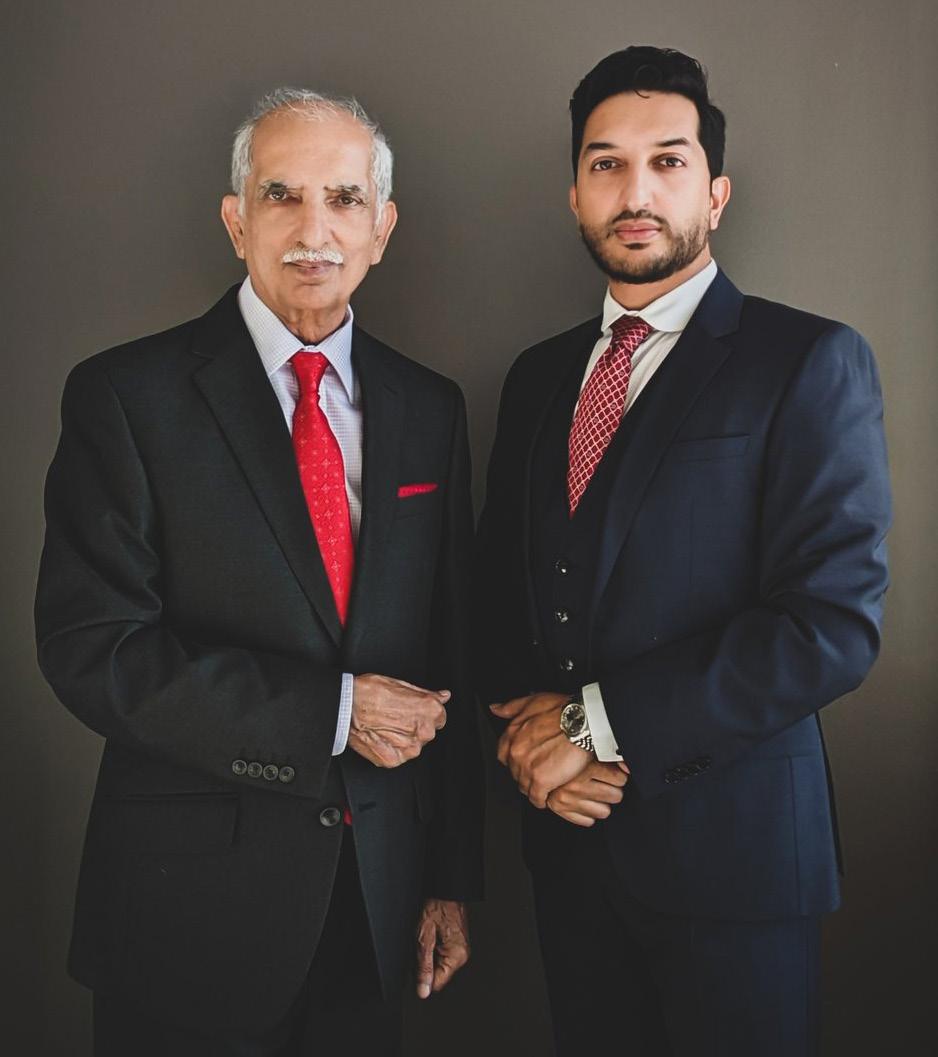
Arriving in Canada
Rashdi practiced law in Saudi Arabia for almost three decades before deciding to move to Canada in 1994. His children,
THEREGISTRAR.CA 10
Mohsin and Baqa Rashdi
he says, were the main reason for the move, but he knew he would have to surrender his professional aspirations to support his wife and their children’s career aspirations.
After applying to the National Committee on Accreditation in Ottawa to assess his foreign credentials, Rashdi was informed that his legal experience wasn’t sufficient to work in a Canadian legal setting. Like many immigrants with foreign credentials, he was required to pursue further education. In his case, it required taking eight full-time law school courses to upgrade his credentials. Unfortunately, the time and cost proved to be prohibitive.
After Baqa was called to the Bar in 2010, Mohsin contemplated returning to his own studies. Baqa says that his father’s experience is one of several immigrant stories where many arrive in Canada with little to no money or guidance. He recounts his father’s experiences working outside of the law to make ends meet, which saw him in office roles being compensated below his marketplace worth.
“We empathize with new immigrants because we’ve been there,” Baqa said. “Courses and exams cost quite a bit of money and we simply didn’t have that at the time." For him [Mohsin], it was either we eat and survive or he follows his dream, and he gave up his dream for all of us.
Reigniting the journey
Having a support system of intuitive minds who were able to teach him was something that Rashdi appreciated. Even as he works with his younger colleagues who are familiar with modern legal nuances, Rashdi says that it always keeps him thoughtfully engaged.
“I am constantly learning since I got my license in 2021, and all of this makes me forget my age,” Rashdi said with a laugh. “With my son being senior to me, he continues to guide me in my practice, as well as with informing me about interpretations of the law in this country.”
Fulfilling a dream was not the only reason Rashdi aimed to get his license. Being a contributing member to society was important to him, as it helps promote a public good. He says that lawyers should always protect consumer interests but stresses the importance of knowing your rights.
“This practice is a very important function of all societies, not just to protect the public interest, but to protect individuals within the framework of law,” Rashdi said.
“Other professions have their own approaches to that, but I think lawyers are involved in that mission every day.”
Coming full circle
Baqa says seeing his father every day at work is an opportunity that he doesn’t take for granted.
“In our culture, our parents remain very important to us,” Baqa said. “Tomorrow is not promised to any of us, so I try to make the most out of my time spent with him.”
Rashdi remarks that, even in spite of the personal and professional challenges faced for decades, he wouldn’t have changed a thing. He stresses the importance of being prepared, especially for new immigrants who aim to build a better life for themselves and families in Canada.
“Anyone coming here should know the expectations of Canada, so that they can prepare for any potential challenges,” Rashdi said. “Know what you are getting into, so that you can pursue a good livelihood and dream.”
THEREGISTRAR.CA 11
“Digital transformation was important for giving us so much more information and for planning in our work environment.”
- Hanrahan
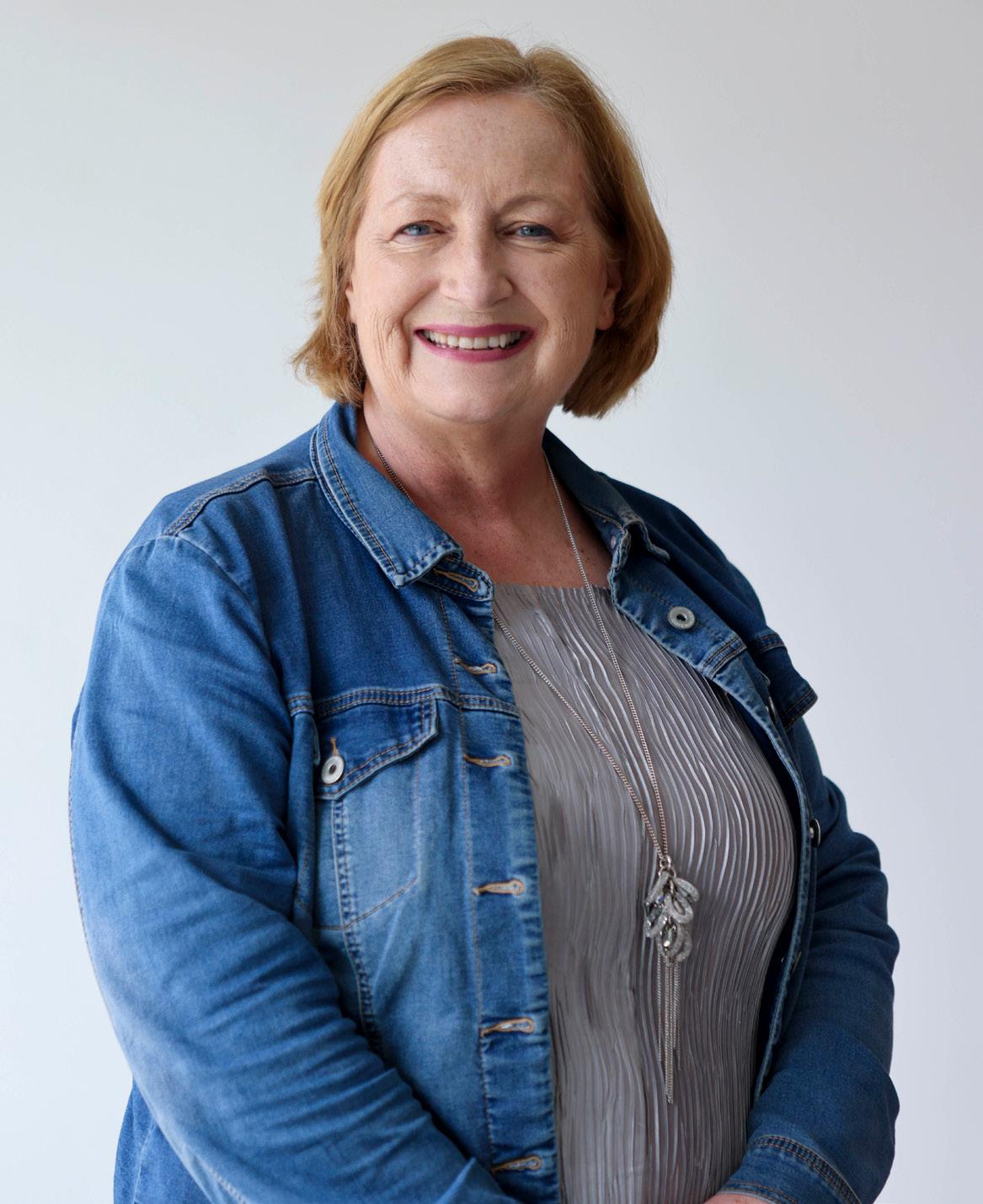
THEREGISTRAR.CA 12
Ginny Hanrahan, Registrar and CEO, CORU
GINNY HANRAHAN
CORU’s retiring Registrar and CEO Ginny Hanrahan on overseeing Ireland’s multi-profession regulator T he Registrar staff
The Council on Licensure, Enforcement and Regulation (CLEAR) recently hosted its seventh international congress in Dublin, Ireland. Among almost two hundred participating regulatory practitioners, one person, a representative from the host country and a deeply respected regulator who was a few weeks away from retirement, stood out.
Ginny Hanrahan was Chair of the committee hosting the event in Dublin. Fifteen years ago, she set up and led CORU, Ireland’s multi-profession health and social care regulator that oversees more than 25,000 licensees from 12 different professions, but is progressing to add an additional 6 professions. To
bring colleagues from around the world to her community just weeks before retirement seemed like a fitting salute to her commitment and leadership.
“This entire industry has been fascinating since I’ve started, and with the experience I’ve accumulated over the years, I’m very fortunate to have been in the position that I have been,” says Hanrahan, who previously served on CLEAR’s board of directors and as president.
Starting out
Born in Dublin, Hanrahan contemplated her academic and professional future, until she came across a lo-
cal occupational therapist working with an eight-year-old girl.
After receiving her primary education at Holy Faith Convent in Clontarf, Dublin, Hanrahan graduated in 1983 with a Diploma of the College of Occupational Therapists (Dip. COT) from London. She then worked in the field for 17 years, with roles ranging from Home and Community Care Senior Occupational Therapist to Head Occupational Therapist at St. Vincent’s University Hospital, including work in the U.K. and Australia for over seven years.
“I was very involved in the professional body,” Hanrahan reflected. “Later on, I became Chair of the As-
Cover Story THEREGISTRAR.CA 13
“This entire industry has been fascinating since I’ve started, and with the experience I’ve accumulated over the years, I’m very fortunate to have been in the position that I have been.

sociation of Occupational Therapists of Ireland. However, it became clear to me during my time spent in the field that there was no proper way of dealing with individual professionals who were not practicing in a safe manner.”
Charting a new course
Hanrahan recalls the Irish Minister of Health engaging with representatives from 15 health professions in the late 1990’s to become professionally and statutorily regulated. The Health and Social Care Professionals Act 2005 (As
Amended) solidified that idea, three years before Hanrahan finished her term as Head of Clinical Services at Beaumont Hospital Dublin. She applied for the role of Registrar and CEO of CORU in 2008, to establish this new regulator.
“When I got the call, my seven-year-old daughter at the time was sick and I had to console and rub her back as I was reading the confirmation letter,” Hanrahan recalls with a laugh.
Gradually, CORU was built up to what it is today, but Hanrahan notes there were significant challenges. Even in the advent of the 2008 Global Financial Cri-
Cover Story
- Hanrahan
THEREGISTRAR.CA 14
Ginny Hanrahan, Registrar and CEO, CORU
sis, during which time Ireland’s economy was particularly hard hit, the regulator eventually found its footing. Thereafter, the aim of promoting greater patient safety through the statutory registration of health and social care professionals was realized. CORU opened its first register for social workers in 2011 and has progressed with 11 other professions including physiotherapists, medical scientists, dietitians and optometrists.
Hanrahan says that two major developments helped build CORU to what it is today, starting with the implementation of new statutory codes of professional conduct and ethics guidelines. She says
that these are incredibly helpful to each profession, so that they know how to navigate conflicts if they arise in their practice. Setting threshold standards for courses to be approved that allow graduates to apply to the register also helps to protect the public. CORU has taken a right touch approach to its work.
Being digitally proficient in their regulatory operations was important, and Hanrahan applauds CORU’s digital transformation. Younger professionals who prefer communication through their phones were kept in mind, Hanrahan said, especially for fitness to practice and professional development oversight.

“There are six generations working in the workforce at the same time,” Hanrahan says of CORU’s staffing. “Digital transformation was important for giving us so much more information and for planning in our work environment, but we have to ensure the messages are meeting the needs of each of the generations.”
Irish regulatory influence
Sustainable regulation is a focal point of CORU’s operations, which Hanrahan has campaigned for since 2012. With the new framework emphasized in their Statement of Strategy 2022-2026, Hanrahan says that it allows CORU to focus on health and social care regulation that is accountable, but also proportionate, adaptable and consistent. Currently CORU has one Council to oversee and coordinate the work of 12 registration boards. It has taken a decade
“Working towards a more engaged, resilient, and compassionate community will always have my interest, and I hope to get involved in other ways with regulation down the line.”
- Hanrahan
Cover Story THEREGISTRAR.CA 15
of work to get to this point, but she says the multi-profession regulator can serve as a great modern example for the international community.
With an increasing percentage of international professionals working in Ireland, and an increase of diversity in the community in Ireland, Hanrahan says that Diversity, Equity, and Inclusion (DEI) efforts have never been more important. Despite being at an early stage of DEI, CORU’s Stakeholder Manager has been crucial in reaching out to specific communities and gaining their perspectives on regulation.
Hanrahan also believes that regulated professions need to reflect the community they serve and that is not the case, but as a regulator, they must work with educators to support different routes of entry to the profession, to support those from diverse backgrounds to join the professions.
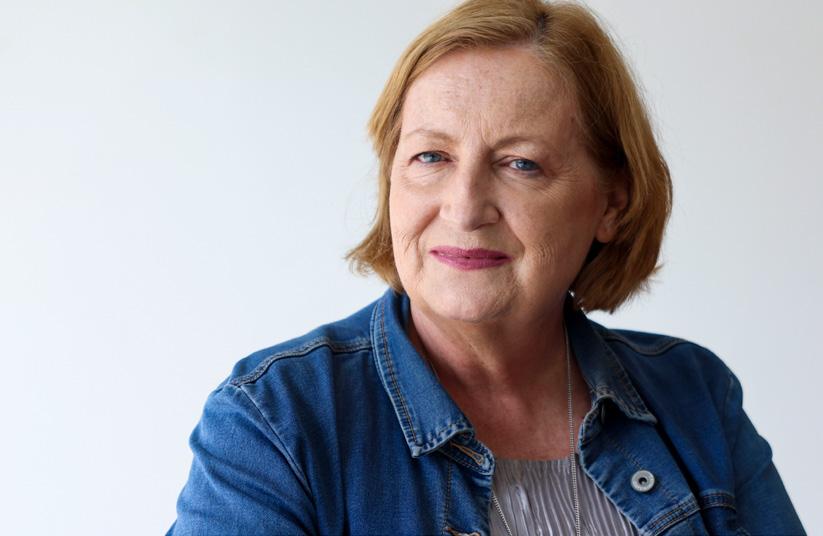
“Darragh [Connolly] has reached out to several communities and asked them how they would like to get involved,” Hanrahan said. “Along with our public ser-
vice duty, DEI is crucial for us, and we are beginning to see things moving in the right direction, in encouraging more people from different backgrounds to get involved in the governance of the organisation, especially when we learn from our international colleagues at CLEAR and AHPRA (Australian Health Practitioner Regulation Agency).”
From registrar to retirement
As she transitions to retirement, Hanrahan looks back with fondness at her roles in the Irish and international regulatory community. Even with a shaky start to the organization’s presence, she says that she is leaving CORU in good hands with a strong Council and senior management team. Hanrahan also thinks that the next Registrar will have an extraordinary future to look forward to.
“I think that being very open and clear about identifying what regulation is, and what it isn’t, is important,” Hanrahan said. “We’re all human, and trying to work through a ridiculous caseload won’t help you, or the public you are entrusted to protect.”
“Working towards a more engaged, resilient, and compassionate community will always have my interest, and I hope to get involved in other ways with regulation down the line.”
Happy retirement, Ginny, and thank you for your inspiration and leadership.
Cover Story THEREGISTRAR.CA 16
Ginny Hanrahan, Registrar and CEO, CORU
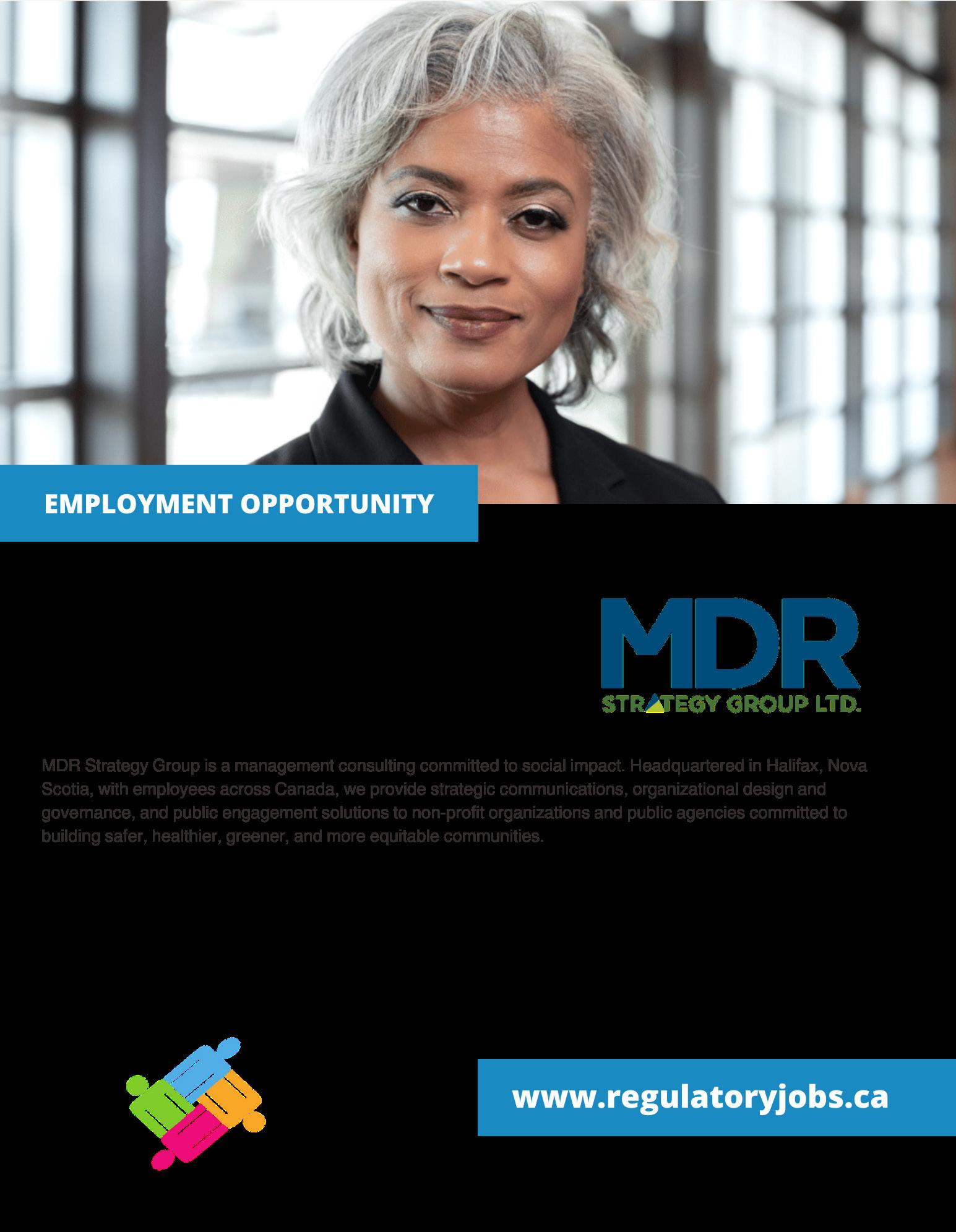


MORE THEREGISTRAR.CA 17
READ
THE MODERNIZATION OF PROFESSIONAL REGULATORY GOVERNANCE
 Dean Benard
Dean Benard
The role of professional regulatory Boards / Councils (Boards for this article) is to oversee and regulate professions to ensure public safety, consumer protection, and the integrity of the profession. In recent years, there have been increasing calls for governance reform in professional regulation due to concerns about regulatory bodies' effectiveness, accountability, and transparency. Professional regulators worldwide are engaged in the issue of governance reform as an essential process if regulators are to win and maintain the public's confidence.
The question is, "What changes should be considered to modern-
ize and enhance professional regulatory governance?" Members of regulated professions must meet standards of qualification and competence and be ethical in their practice and conduct. Should the same general standards be required of Board members?
Others have put forward ideas and helped some regulators enhance their internal oversight. Some of those ideas follow in this article, which strives to summarize, what reforms will enhance good governance for professional regulators. How some of it will be done is another question for another article.
Governance
THEREGISTRAR.CA 18
Dean Bernard
Board composition:
One of the critical issues in governance reform is the composition of regulatory Boards. Traditionally, regulatory Boards have been comprised of professionals from the same field they regulate and, in some jurisdictions, public appointees. The makeup of these Boards has traditionally been top-heavy with members of the professions, leading to concerns about conflicts of interest. In response, there have been calls for greater public representation to ensure the public interest is better served. This has led to some regulatory bodies being reconstituted with more public members. This is essential, and regulatory bodies should be looking at representation by public members in the 50% range of Board makeup.

Competencies:
Once we have the right mix of professional and public members of Boards, we need to look carefully at qualifications. One key aspect of regulatory board modernization in Canada is ensuring that boards are
comprised of members with diverse skills, expertise, and backgrounds relevant to the role they will play on the Board. Perhaps those members of the profession who wish to run for a seat on a Board should first have to demonstrate the skills, knowledge, and expertise they bring to the table, not just in their profession but in the role of a Board member. This includes technical knowledge and an understanding of the social, economic, and environmental implications of their role and that of the Board as a whole. Having people with appropriate expertise and background leads to a multidisciplinary membership on regulatory boards, which enhances their ability to make informed decisions, identify emerging issues, and address complex challenges effectively.
Diversity & inclusion:
Regulatory board modernization must also promote diversity and inclusivity in board membership. Boards that reflect the diversity of the industries they regulate and the communities they serve are better equipped to make balanced and informed decisions. This includes
diversity in terms of gender, race, ethnicity, age, and other aspects of diversity. Embracing diversity and inclusivity in board membership can help mitigate biases, enhance decision-making, and promote fairness and equity in regulatory processes.
Professional development:
Board members must be willing, and Boards must be ready to build capacity, including ongoing training and professional development for board members. As professions evolve and societal expectations change, regulatory boards and board members must continuously update their knowledge and skills to keep up. Regular training and professional development programs can ensure that board members are equipped with the necessary expertise and tools to operate and regulate their respective professions effectively.
Technology:
Boards need to embrace technology to help streamline processes, enhance data-driven decision-making, and improve communication and accessibility for stakeholders. Leveraging technology can enable regulatory boards to be more agile, efficient, and effective in their operations. This may include using
THEREGISTRAR.CA 19
digital platforms for submitting and accessing information and tracking regulatory compliance, as well as utilizing data analytics and artificial intelligence to identify patterns and trends so they can be proactive in their approach to governance.
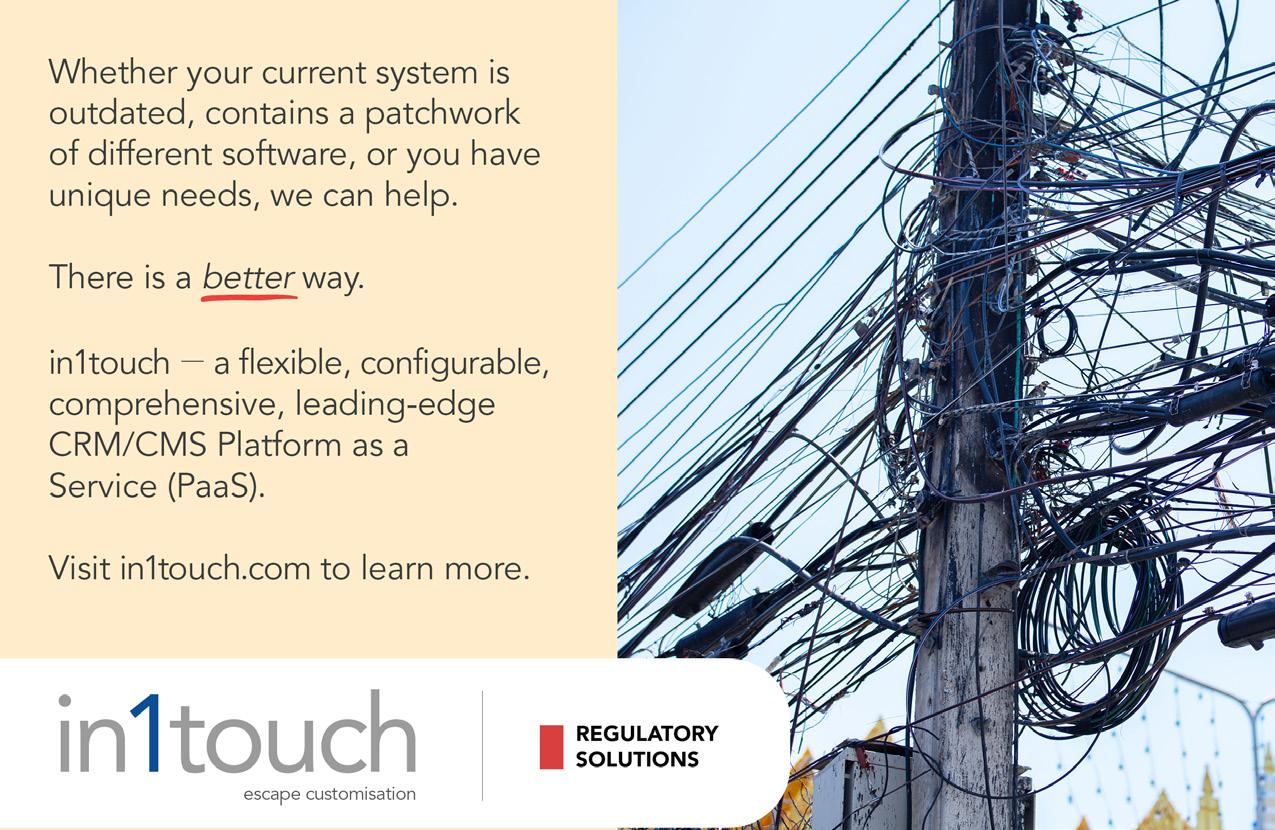
Transparency & accountability:
Another vital aspect of modernizing regulatory boards is promoting transparency, accountability, and public engagement. Boards should co-operate transparently, with clear processes, guidelines, and decision-making frameworks commu-
nicated to the public. This includes providing opportunities for public input, soliciting feedback, and actively engaging stakeholders in the regulatory processes. Public engagement can help ensure that the decisions made by regulatory boards are aligned with the public interest and that the public's concerns and perspectives are considered. Boards, and by extension, their committees, need to be transparent about their decision-making processes, including how they arrive at decisions, the evidence they consider, and the reasons for their decisions. This transparency is essential to ensure that professionals and the public understand the regulatory process and can hold regulatory bodies account-
able for their decisions. In some cases, regulatory bodies have been criticized for their lack of transparency, leading to concerns about the fairness and effectiveness of their decisions.
The above is not an exhaustive list of reforms. Still, these modernization efforts are critical if professional regulatory bodies to oversee and regulate professions effectively and fairly in the ever-evolving landscape.
The opinions expressed in this article are reflective of the writer’s own opinions and thoughts on the regulatory sector.
I have worked with Sam for over 10 years and have witnessed his strongest talents as a well thought strategic perspective and mindset, attention to detail and a keen ability for effective communication. Sam has always put his team and clients interest front and centre and operated in a most professional manner.
 Professional Regulation and Governance Consultant with 25 years leadership experience helping professional regulators and associations build better governance structures and practices.
Sam Lanctin, BPharm, MBA, ICD.D
Professional Regulation and Governance Consultant with 25 years leadership experience helping professional regulators and associations build better governance structures and practices.
Sam Lanctin, BPharm, MBA, ICD.D
506-800-6922 www.samlanctin.com sam@samlanctin.com Strategy Leadership Governance Coaching/Advisory Planning Board relations Bilingual ICD Certified sam@samlanctin.com www.samlanctin.com 506-800-6922
Fred McLean
OUTCOME-BASED REGULATOR TRANSFORMATION:
The Next Evolution of Safety
Bonnie Rose, President and CEO, Technical Standards and Safety Authority
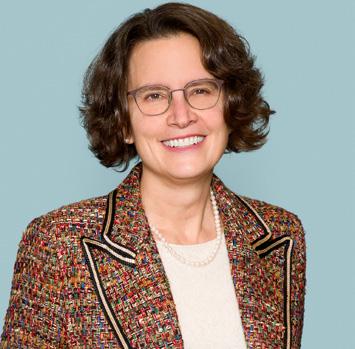
While the regulatory environment evolves around the world, regulators are building capacity and adopting new approaches to deliver on their mandates and add public value. In the face of political and economic pressures, however, regulators find themselves challenged to achieve and maintain required outcomes, while demonstrating value and reducing regulatory burden on businesses.
As a public safety regulator, the Technical Standards and Safety Authority (TSSA) is mandated by the Government of Ontario to implement the Technical Standards and Safety Act and its associated regulations. The purpose of the Act is to enhance public safety in Ontario by
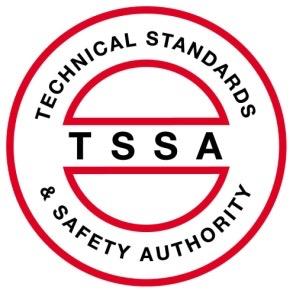
overseeing the efficient administration of regulations, alternate rules and technical standards for amusement devices, boilers and pressure vessels, elevating devices, fuels and operating engineers. Our scope of oversight is comprehensive, to say the least, as we provide a range of safety services including public education, certification, licensing and registration, engineering design review, inspections, investigations, compliance support, enforcement and prosecution activities. Operating independently of the government, we are a not-for-profit organization, self-funded by fees charged to regulated parties in our mandated industries.
As technological advances, demographic shifts, and continued in-
The Regulator
Bonnie Rose, President and CEO, TSSA
THEREGISTRAR.CA 22
stances of risky behaviours add to the complex environment in which TSSA operates, being truly modern and increasingly effective at achieving our critical safety outcomes required a fundamental shift in the way we function as an organization. The approaches once used by TSSA to address safety risks had to evolve to include both traditional and innovative tools for encouraging and ultimately enforcing compliance. We had to become more informed with better access to more reliable data to make decisions and evaluate our impact. As importantly, we need to share that data with our stakeholders to empower their decision making. It became very apparent that more collaboration with our partners and regulated stakeholders was essential to continue to build and maintain trusting relationships and meet our safety goals.
Targeted and collaborative risk reduction for a safer Ontario
TSSA is a different organization than it was four-anda-half years ago, when I came on board, one year into a transformation that was just beginning. While our mandate to advance safety and reduce harm in Ontario

has stayed constant, the means by which we aim to accomplish this has radically changed. In the past, TSSA relied on inspections as its primary regulatory tool. Now, we are amassing a full regulatory toolkit and building on the inspection regime to oversee and promote safety in the province. Our desired future state is to fully transform into an Outcome-Based Regulator, focusing our resources on areas that pose the greatest threat to public safety and using all the tools that data and evidence tell us are the most effective.
While a multi-year strategy with numerous initiatives set our transformation in motion, here I will focus on the four major transformative shifts within the strategy. First, we needed to improve our technology infrastructure and business processes so that we have access to good data, and then we had to strategically make use of that data to improve safety. It was also necessary to implement new processes and policies, including a new business model that would allow us to deliver on our safety objectives by making the best use of our limited resources. To make these changes effectively, shifting to an organizational culture of leadership, accountability and teamwork was essential.
TSSA employees with Bonnie in lobby
THEREGISTRAR.CA 23
Digital modernization
The ability to readily access clean, trustworthy data with which to make evidence-informed, riskbased decisions is the hallmark of an Outcome-Based Regulator. As a critical success factor of our modernization plan, we launched a multi-phase integrated IT business solution, going live with three safety program-specific IT releases in four years and preparing to launch a customer self-service portal soon. Implementation of the system included comprehensive data cleansing, data storage and data governance components. The IT system really is a gamechanger for TSSA, as it is the foundation for many of our new and improved safety initiatives that rely on accurate data to pinpoint the high-risk areas that we need to direct our attention and resourc-
es towards, while also providing a platform that makes it simpler for regulated parties to interact and do business with us.
Leading-edge business model
As the organization transforms and supplements its safety services with improved risk analytics and an emphasis on reducing high risks, its business model had to change, as well. Moving away from a fee-forservice structure in 2021, we introduced a fixed annual fee that covers the safety oversight of our regulated parties and eliminates separate bills for licences, permits, business registrations, and regular inspections. Today, TSSA’s regulated clients are no longer billed for routine inspections, except in cases where we must
perform multiple follow-up inspections due to ongoing non-compliance.
Ultimately, our new business model will allow us to allocate the fees collected for targeted harm-reduction programs and other resources to areas where they will make the greatest safety impact, as informed by data analysis. Having TSSA services prepaid and revenues no longer tied to individual inspections has enabled us to shift our focus to spending time on more safety-critical inspections, underground market reduction, and new safety tools.
New approaches using data to improve safety
Historically, TSSA had not used its licensing authority as a safety tool. One aspect of being an Out-

THEREGISTRAR.CA 24
TSSA employees with Bonnie in cafeteria
come-Based Regulator is broadening the range of regulatory tools TSSA uses. TSSA licensing is both the initial and annual contact point with regulated parties, and it forms the basis for periodic inspections and monitoring. When regulated parties do not renew their licensing, TSSA is unable to maintain accurate information on the businesses and devices operating in Ontario and cannot provide effective oversight as a regulator. As such, we implemented a program to ensure that regulated entities renew their licensing in a timely manner and do not operate without a valid licence.
As part of our modernization journey, we also launched a Compliance Support Program that uses data to identify regulated stakeholders with high-risk operations and devices. We then offer these high-risk entities the opportunity to work di-

rectly with TSSA to address their specific non-compliance issues free of charge. The goal is to collaboratively develop action plans that enable regulated stakeholders to take ownership of their compliance.
In addition, we developed a new periodic inspection tool that we call Compliance Standards, which are established by analyzing hazards and risks found through inspection and incident history to identify the areas in our regulated sectors most correlated to risk. Compliance standards are essentially a TSSA inspector checklist that clearly defines high-risk items and lower-risk safety tasks for specific devices and dictates clear deadlines by which non-compliance issues must be resolved. For transparency, we make the Compliance Standards public so that industry knows exactly what to prioritize to reduce the potential for
harm. A safety tool like Compliance Standards goes a long way in helping TSSA respond proportionately to risk levels.
These are really a fraction of the new safety initiatives recently employed by TSSA, but they are the key data-driven programs driving our Outcome-Based Regulator transformation forward.
Outcomebased regulatory advancements
The sectors we oversee have undeniably felt the impacts of our transformation, as we implemented new outcome-based regulatory changes, in partnership with the Government of Ontario, and consulted with industry members every step of the
THEREGISTRAR.CA 25
TSSA employees collaborating
way. One government-led initiative that the Ontario public will most likely see the direct impact of is the introduction of new elevating device regulations to enhance elevator availability and safety. Among other advancements in this area, TSSA is now collecting data on elevator outages in residential buildings and reporting it online for public viewing so Ontarians can be better informed when making decisions to buy or rent a home. Data collected from elevator outage reports will also inform and shape future regulatory decisions on elevators.
In addition, Ontario’s agricultural sector marked a new safety milestone when agricultural boilers and pressure vessels recently came under safety regulations. To be in compliance with safety laws, owners and operators of agricultural operations are now required to register pressure equipment that was previously exempt from regulation. TSSA is using the data collected to conduct risk-based assessments and establish a priority list for scheduling device inspections within five years.
TSSA also worked closely with the Ontario government to introduce alternate rules for power plant operating engineers to achieve regulatory compliance for requirements like plant staffing and certification timelines. The alternate rules facilitate a risk-based approach to the operating engineers regulation and ultimately reduce burden on businesses by allowing for more flexible
means to achieve safety outcomes, while maintaining public safety.
Organizational culture shift
Last but certainly not least, we are prioritizing our internal culture at TSSA because we know that to truly be effective as a modern regulator, the change must occur from the inside out. In the past few years, we’ve onboarded a new executive leadership team and director-level experts and launched several initiatives conducive to collaboration, teamwork, accountability and leadership. Most recently, to identify and address the common education and training needs across our organization, we created a new Education Department that supports the enhancement of technical knowledge and ongoing development throughout TSSA.
Finishing what we’ve started
Having celebrated our 25-year anniversary last spring, we spent much time reflecting on just how far TSSA has come as a regulator and the massive changes we’ve undergone, especially in the past few years. The momentum to fully realize our Outcome-Based Regulator transformation is growing throughout our organization. We also recently defined a more consistent and profes-
sional brand that is aligned with our Outcome-Based Regulator transformation and are working to launch a new corporate website in our next fiscal year.
According to feedback we’ve received through in-depth consultations with various stakeholders on the organization’s new direction, the future of TSSA is very bright. We have better data, systems and partnerships, and we’re improving the safety ecosystem, while putting less administrative burden on our regulated stakeholders so they can focus more on safety outcomes.
We’ve made some tremendous advancements and have been fortunate to have the support of our employees, the government and our regulated parties as we introduced changes that had a substantial impact on the vast majority of our stakeholders and enhanced the safety of our province. As our Outcome-Based Regulator journey continues, our commitment for the next five years is to keep building on the solid foundation we’ve put in place today.
THEREGISTRAR.CA 26






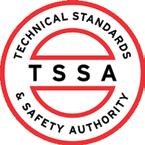
April Cylinder Exchange Compliance Standard1 September Tanker Trunk Compliance Standard Fall Compliance Support Program April Risk-Based2 Fuels Heating Contractor Audit Program Summer Risk Score3 Analysis Enhancements Fall Risk-Based Fuel Oil Distributer Program November Operating Engineers Alternate Rules4 March New IT Business Solution Release 1 April Ski Lift Compliance Standard May New Business Model & Fee Structure Lapsed Authorizations5 Reinstatement Process July Agricultural Boilers & Pressure Vessels Regulatory Exemption Lifted Summer Risk-Based Operator Rating System for Pipeline Operators March New IT Business Solution Release 2 May Historical Lapsed Authorizations Resolution Process July Residential Elevator Availability Portal August Seven Code Adoption Documents March New IT Business Solution Release 3 Elevator & Escalator Compliance Standards
A timeline of the implementation of key programs driving TSSA’s Outcome-Based Regulator transformation 2019 2020 2021 2022 2023 Compliance Standards: Evidence-based safety priorities publicly available with clear industry responsibilities and time-to-comply deadlines 2 Risk Based: Focusing on non-compliances most likely to result in harm 3 Risk Scores: Easy-to-understand scoring system that identifies high-risk operations and helps determine root cause 4 Alternate Rules: Risk-based approaches to achieving safety outcomes 5 Authorizations: Licensing tools (i.e., licences, registrations, certifications, permits) 6 Code Adoption Documents: Minimizing Ontario-specific requirements by aligning with other provinces through the adoption of national and binational codes The Registrar Magazine invites regulatory bodies to contribute news, updates, and other information in their own words. If you are interested in spotlighting your regulatory body, contact The Registrar Magazine. The opinions expressed in this article are those of the organization and its contributors. THEREGISTRAR.CA 27
TSSA Modernization Journey











THEREGISTRAR.CA 28
Courtesy of CLEAR, Fennell Photography, Dublin














THEREGISTRAR.CA 29
LISE BETTERIDGE

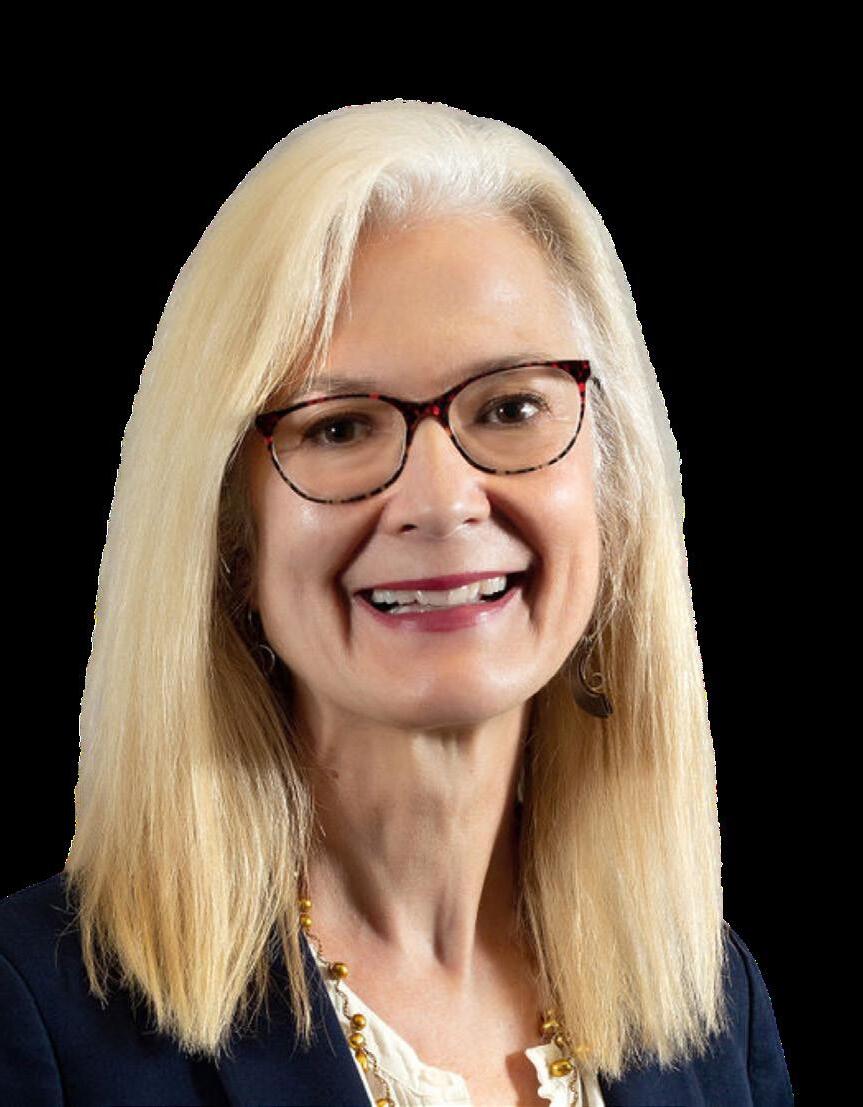
Social worker retirement party
Episode 5
Join host Daniel Roukema and Lise Betteridge, the Registrar and CEO of the Ontario College of Social Workers and Social Service Workers. In conversation in advance of her retirement, Lise passionately reflects on her career, her hopes for a more inclusive future, and her contributions to protecting the public.

THEREGISTRAR.CA 30
DR. ZUBIN AUSTIN
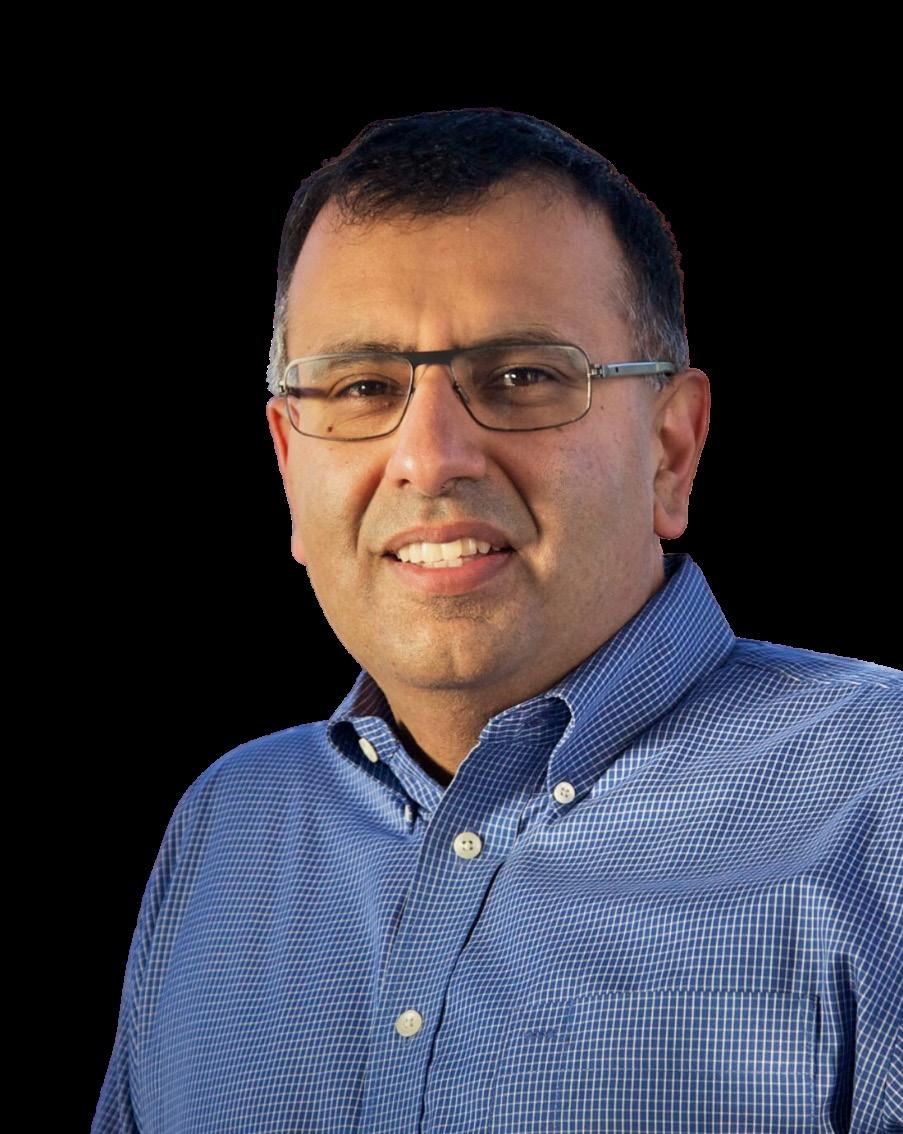
The importance of kindness in regulation
Join host Daniel Roukema and Dr. Zubin Aus tin, as they chat about the importance of kind ness in regulation and health-related issues af fecting Canadian regulators including the need

po dc as t THEREGISTRAR.CA 31
Death – the subject no one wants to talk about.

But really, ever yone needs to know about.
This free family magazine is filled with compelling stories & videos about your options & rights in death sector services. Share it with your family.
The online magazine also focuses on consumer protection information, human interest stories on grief, history of cemeteries, plus features on familiar and lesser-known services.

Beyond is the magazine of the Bereavement Authority of Ontario (BAO), a government delegated authority administering provisions of the Funeral, Burial and Cremation Services Act, 2002 (FBCSA) on behalf of the Ministry of Public and Business Service Delivery.




Responsible for protection of the public interest, the BAO regulates and supports licensed:
• Funeral establishment operators, directors and preplanners;
• Cemetery, crematorium and alternative disposition operators;

• Transfer service operators; and

• Bereavement sector sales representatives across Ontario.

The BAO is wholly funded by licensee fees (not tax dollars).

Clicktosubscribe
Click here to read or subscribe






























 Dean Benard
Dean Benard


 Professional Regulation and Governance Consultant with 25 years leadership experience helping professional regulators and associations build better governance structures and practices.
Sam Lanctin, BPharm, MBA, ICD.D
Professional Regulation and Governance Consultant with 25 years leadership experience helping professional regulators and associations build better governance structures and practices.
Sam Lanctin, BPharm, MBA, ICD.D



















































